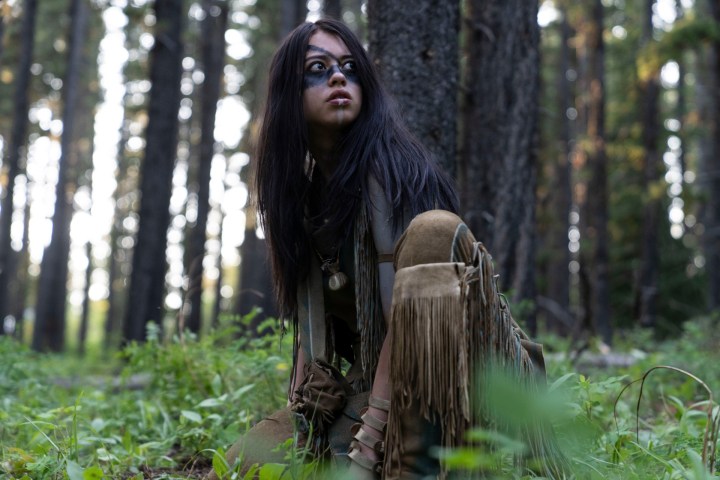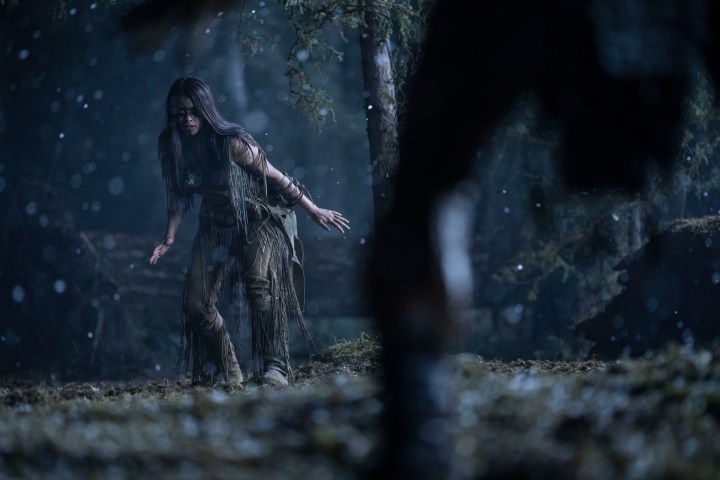Ever since their first brawl with Arnold Schwarzenegger in 1987’s Predator, the extraterrestrial hunters at the heart of the Predator franchise have found their way back to the big screen time and time again. And like the films’ titular, alien antagonists, the seven-film franchise often seems unstoppable, overcoming negative reviews, middling box-office numbers, and even a few terrible crossovers to return with a new twist every few years.
Although none of the installments have matched the success of the original film so far, a few have come close. That extremely small list includes the latest film in the franchise, Prey, which offers one of the most intriguing, well-executed twists on the series’ mythology so far.

Directed by Dan Trachtenberg (10 Cloverfield Lane) from a script by Patrick Aison (Treadstone), Prey is set in 1719 and follows a young Comanche woman whose desire to be recognized as a warrior puts her in the path of a powerful, mysterious hunter. Spoiler: it’s a Predator.
The cast of Prey is led by Amber Midthunder (Legion) as Naru, a skilled hunter challenging traditional gender roles with her fighting skills and strategic mind. She’s joined by Dakota Beavers as Taabe, Naru’s brother and a well-established warrior and hunter.
Midthunder not only carries the film, but does so with impressive ease. It’s no surprise that the film features plenty of action sequences, but what is a pleasant surprise is how comfortable Midthunder looks in all of them — whether she’s battling a human, a bear, or a monstrous alien with a lethal, high-tech arsenal. She’s a natural in the hero role, and pitting her character against the massive extraterrestrial antagonist (played by former basketball player, now actor Dane DiLiegro) makes her stunt work — and as a result, Naru’s fighting skills — look even more impressive.

The level of testosterone in Prey (or just about any film, for that matter) couldn’t hope to match that of the star-filled 1987 film with its constant stream of sweaty, bulging muscles and alpha-male banter, but like its protagonist (and unlike many of the sequels and spin-offs before it), the film doesn’t try to beat Predator at its own game. Prey filters the terrifying experience of being hunted by a Predator through a new lens with its setting, its protagonists, and its attitude toward the relationship between hunters and the hunted. The Indigenous characters portrayed by Midthunder, Beavers, and many of the film’s other cast members view the world around them differently than the protagonists of prior Predator films, and that unique perspective makes Prey feel like a different film, too.
What Trachtenberg does carry over from past installments of the franchise is equally important, too.
Various Predator films over the years have struggled with the need to up the explosive ante, often going too far overboard in powering up the monstrous alien hunters in order to make the stakes feel higher or the threat more dire. Unlike nearly all of those films (with the possible exception of 2010’s Predators), Prey takes a different angle on the human-Predator dynamic — one that more closely echoes that of the original film.

In setting the film in 1719, Prey effectively de-powers its human protagonists, stripping them of the high-tech weaponry and armor that turned the franchise into an escalating arms race over the years. Naru, Taabe, and the rest of the film’s human characters fight with hatchets, spears, arrows, and — at their most explosive — awkward, muzzle-loaded rifles. That mismatch turns their survival into a battle of wits and strategy instead of a war of technological attrition.
Often forgotten amid all of the biceps, gunfire, and one-liners of director John McTiernan’s original 1987 film is the fact that Schwarzenegger’s protagonist didn’t outmuscle or out-gun Predator‘s titular antagonist. He out-thought it. He observed it and used what he discovered along with his knowledge of the environment to gain an advantage. Trachtenberg clearly understands that aspect of the first film’s appeal, and puts that knowledge to good use in Prey.

Despite being technological underdogs in their battle against the Predator, Naru and Taabe never feel hopelessly overmatched in the film. The odds are stacked against them, certainly, but there’s a sense that their awareness of the advantages they do have — and their ability to tap into them — give them a better chance at survival than the typical meathead mercenaries and trigger-happy characters that the franchise typically throws at the Predators.
In channeling that same, stripped-down vibe of the original Predator through a new protagonist with a different set of skills and relationship to the environment (or in this case, hunting grounds), Prey manages to both go back to the franchise’s roots and deliver something new. That’s not an easy balance to strike, but Trachtenberg and the film’s talented cast pull it off remarkably well. Easily the best film since the original, Prey suggests there’s still plenty of untapped potential in the Predator franchise.
Directed by Dan Trachtenberg, Prey premieres August 5 on Hulu.
Editors' Recommendations
- 7 biggest flaws of the most popular movie franchises, ranked
- 7 franchises that need a reboot right now
- 5 sci-fi movies on Hulu that are perfect to watch in the summer
- Slash/Back review: The kids are all right (especially when fighting aliens)
- Rosaline review: Kaitlyn Dever lifts up Hulu’s Romeo and Juliet rom-com riff






